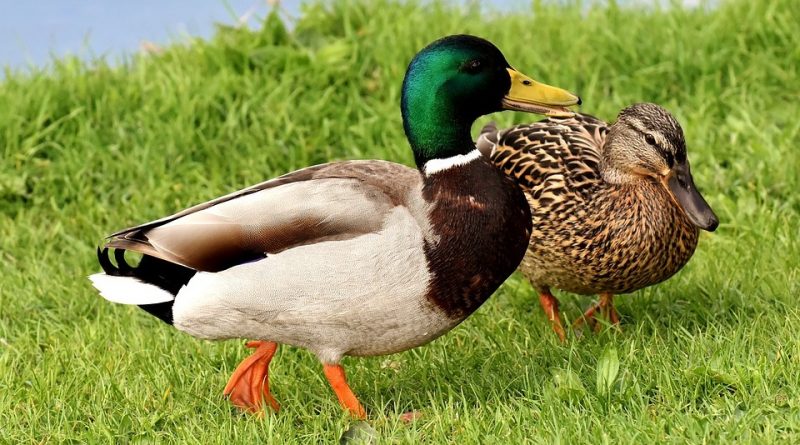Health and Disease Management of Indigenous Ducks (Anas Plathrynchus) in the Tamale Metropolis, Northern Region
Abstract
A survey was conducted in 23 selected communities in the Tamale metropolis to identify various health and disease management practices employed by local duck farmers. Snowball sampling technique was used to select the various communities while purposive sampling technique was used to identify duck farmers within the communities. Primary data was obtained using semi-structured questionnaires administered to 91 duck farmers and was analyzed using SPSS version 20. Results of the survey showed that majority (69.2%) of the farmers adopted biosecurity measures whiles 30.8% adopted no biosecurity measures. The majority of the farmers (64.8%) practiced a semi-intensive management system. In terms of various biosecurity measures carried out by farmers, 9.5% ensured good hygiene whereas 17.5% practiced culling and slaughtering of sick ducks to avert possible transmission of infections. Additionally, 28.6% of the farmers provided water and fed regularly to their ducks. Some farmers (11.1%) protected their ducks from predator’s whiles control of ticks was carried out by 3.2%. Few farmers (9.5%) provided shelter to ducklings whiles 20.6% provided prophylactic treatment to ducks. Few farmers (4.4%) follow vaccination schedules whiles 95.6% do not. Modern treatment was practiced by 31.9% whiles 1.1% use ethno-veterinary medicine. The majority of the farmers (76.7%) used Amoxicillin antibiotics whiles 6.7% and 13.3% use Sulfa and Flagyl (metronidazole) drugs. The medicaments identified were used in treating symptoms and ailments such as anorexia, paresis, fowl cholera, and paralysis. Avian botulism was the prevalent disease in the study area. In terms of action on sick ducks, 24.2% of the farmers slaughtered and consumed sick ducks whiles 33% treated their sick ducks. From the study disease management of ducks in the metropolis has not been given much attention by farmers however, with much extension education on these the farmers would obtain many benefits from their production.
Downloads
References
Adzitey, F. (2012). Production potentials and the physicochemical composition of selected duck strains: a mini review. Online J. Anim. Feed Res., 2(1):89-94.
Capua, I. and Marangon, S. (2006). Control of Avian Influenza in Poultry. Journal of Infectious Diseases, 12(9): 1319-1324.
Conan, A., Goutard, F. L., Sorn, S. and Vong, S. (2012). Biosecurity measures for backyard poultry in developing countries: a systematic review. BMC Veterinary Research, 8:240.
Cristalli, A. and Capua, I. (2007). Practical problems in controlling H5N1 high pathogenicity Avian Influenza at village level in Vietnam and introduction of biosecurity measures. Avian Dis, 51(1):461-462.
Dei, H. K., Alenyorege, B., Apalibe, D. A., Okai, D. B. and Larbi, A. (2014). Assessment of Rural Poultry Production in Northern Ghana. Department of Animal Science, University for Development Studies. Ghanaian Journal of Animal Science, 8(1): 101-114.
Esse, J. (2021). Anas platyrhynchos, The Mallard. http://bioweb.uwlax.edu/bio203/s2009/esse_jaso/index.htm. Retrieved on the 03rd of August 2021 at 11:46 am.
Food and Agricultural Organisation (FAO), (2008). Biosecurity for Highly Pathogenic Avian Influenza: Issues and Options. Rome. (ftp://ftp.fao.org/docrep/fao/011)
Food and Agricultural Organisation (FAO). (2013). Understanding and integrating Gender Issues into Livestock Projects and Programmes. (www.fao.org/publications)
Ghana Statistical Service (GSS). (2010). Population and Housing Census. District Analytical Report, Tamale Metropolis (www.statsghana.gov.gh).86pp.
Gueye, E. F. (2009). The role of networks in information to family poultry farmers. Worlds Poultry Science Journal, 65: 115-124.
Halifa, M. (2008). Good biosecurity practices in non-integrated commercial and in scavenging production systems in Tanzania. FAO. Study report 1-28.
IV World Waterfowl Conference Proceedings (IV WWCP). (2009). Proceedings of the IV World Waterfowl Conference, organized by the Kerala Agricultural University, Centre for Advanced Studies in Poultry Science, College of Veterinary and Animal Sciences and World's Poultry Science Association (India Branch) under the auspices of Asia Pacific Federation of WPSA held from the 11-13 November, 2009 at the Lulu International Convention Centre, Thrissur, Kerala, India.
Jacob, J. and Pescatore, T. (2012). Breeding ducks- the importance of good health. International hatchery practice, 19(6): 19-21.
Karbo, N., Avornyo, F. K., Atiigah, S. and Biimi, N. Z. (2003). Preliminary studies on the pattern and causes of guinea fowl (Numida meleagris) keet losses in Garu Bawku East District. Savanna farmer 3:15-17.
Meulen Van der, S. J. and Dikken den, G. (2004). Duck keeping in the Tropics. Agromisa, (www.agromisa.org)
Oguntunji, A. O. and Ayorinde, K. L. (2015). Health management practices and reproductive performance of ducks in Nigeria. Journal of Agricultural Sciences, 60(3): 325-337.
Pabilonia, K. L. (2007). The role of domestic ducks in the maintenance and spread of Avian Influenza viruses in Indonesia.https://dspace.library.colostate.edu/handle/10217/68188?)
Stick, D. and Foote, M. (2006). Waterfowl. https://www.ncpedia.org/waterfowl cited on the 03/08/2021 at 9.23 am
Turkson, P. K. and Okike, I. (2016). Assessment of practices, capacities and incentives of poultry chain actors in implementation of highly pathogenic Avian Influenza mitigation measures in Ghana. Veterinary Medicine and Science, 2: 23-35.
Veterinary Services Directorate of the Ministry of Food and Agriculture (VSD) (2010). Annual Reports. Ministry of food and Agriculture Database. (www.mofa.gov.gh/)
Wakenell, P. (2016). Management and medicine of backyard poultry. In: Current Therapy in Avian Medicine and Surgery. Pp: 550–565. Published online 2016 Apr. 15. doi: 10.1016/B978-1-4557-4671-2.00024-0

Copyright (c) 2021 Anthony A. Agbolosu, G. Aawona

This work is licensed under a Creative Commons Attribution-NonCommercial-NoDerivatives 4.0 International License.










